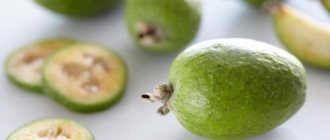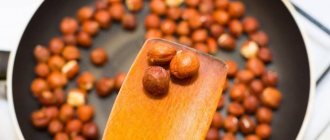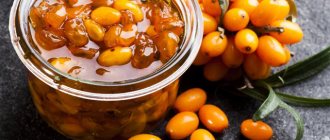Why are they useful?
This is a bivalve mollusk that is present in the diet. It began to be used as food more than 2000 years ago, and the ancient Romans became the discoverers. Seafood is famous for its exotic taste and rich nutritional composition. It includes:
- vitamins A, B, C, D;
- minerals: iron, calcium, copper, zinc, phosphorus;
- unsaturated fatty acids.
The calorie content of 100 g of shellfish is 79 kcal, of which:
- proteins – 8.87 g;
- fat – 2.65 g;
- carbohydrates – 4.23 g.
The accomplished 18th-century ladies' man Giacomo Casanova used oysters as a natural aphrodisiac. He ate about 50 shellfish for breakfast, which helped increase his libido.
Fresh oysters contract muscles when touched
Training video and recommendations
Depending on how many people the oysters are intended for, their number on the tray varies from 6 to 24 pieces, but always in multiples of 6. In addition, the larger they are, the fewer there will be. The menu of most restaurants often includes oysters No. 3 in their pure form, and larger (up to No. 00) or small (up to No. 5) oysters are used as ingredients for other dishes. This should also be taken into account if you are going to implement any recipe containing oysters among its ingredients. Small types (No. 4-5) are suitable for sandwiches and other cold appetizers, and for casseroles, soups, etc. oysters No. 00 are purchased.
The period in which this marine inhabitant was caught is also important. In France, eating oysters is practiced from September to April, since they actively reproduce from May to August. At this time, the shellfish become fattier, which not every gourmet will like. In addition, fishing for oysters in late spring and summer is prohibited by law, which was originally intended to protect these marine inhabitants from declining numbers.
It should also be noted that among oysters there are also species that are not suitable for consumption. Therefore, when purchasing frozen seafood in a store, pay attention to the data from the supplier or manufacturer. Portuguese and Adriatic oysters, as well as rock types, can be served at the table. Moreover, they can all have a different type of shell - concave or flat. You can also clarify the question of the salinity of the water in which the oysters lived. If the indicator exceeded 30‰ (ppm), the meat of such seafood is a bit harsh, so it has to be soaked in sauce for a long time and subsequently heat-treated. The standard value of water salinity, at which the optimal growth rate of shellfish and the taste of their meat is observed, is 25‰.
Basic selection rules
Not all types of oysters are imported into the territory of the Russian Federation, but only:
- "White pearls".
- "Tsarskaya".
- Fine de Claire (Fine de Claire).
Most often, the name of the seafood also includes a number that indicates its size:
- No. 1 – from 100 to 200 grams;
- No. 2 – from 75 to 100 grams.
“White Pearl” is considered the most meaty and juicy. It has a marine taste with a slight sweet-salty undertone. Shellfish are grown in the French province of Marennes Oléron.
Fresh and high-quality seafood will be weighty due to the presence of juice and have tightly closed flaps. In addition, when tapped, the sink will make sounds that indicate the presence of voids.
How to open a shell correctly
The freshness of a product can be determined both visually and experimentally. A live oyster, when taken in the palm of your hand, will certainly have weight, while a spoiled product will be almost weightless. If you knock on the shell, then for a living oyster the sound will be dull, and for a dead oyster it will be loud.
The sink is opened slightly with a special knife, inserting the blade into the junction of the valves and carefully turning the lever. A living mollusk will certainly react, trying to slam the shell shut. The task comes down to using a blade to cut the muscle connecting the valves. The result of your efforts will be clear juice that appears through the valves.
All that remains is to finally open the shell and use the tip of a knife to remove small broken pieces of the walls from the bottom flap. Fresh oysters that open to the eye should have a dense, non-blurry structure. When drops of lemon juice come into contact with them, they will shrink, slightly decreasing in size. Oyster meat is eaten fresh, using a special fork to remove it from the shell and not forgetting to first squeeze a few drops of lemon pulp onto it. The remaining juice in the sink is also drunk.
Secrets of proper eating
To enjoy the extravaganza of taste, there is a classic technique for eating oysters - sucking the contents of the shell. Its juice is quite specific and can harmoniously complement shellfish meat. It goes well with black rye bread or croutons and red or shallots.
How to open an oyster
Shellfish is a group dish that is most often served raw and in quantities of 6 to 12 pieces. To eat them, special cutlery is used: a fork with two prongs and a knife with a thin sharp blade. To open a sink you need to have some skills:
- Put a chainmail glove on your left hand or wrap it with a napkin. This is necessary to prevent the seafood from slipping out or being injured.
- Hold the shell in your palm with the flat side facing up.
- Take the knife with your right hand and carefully insert it between the sashes. This process requires effort, but do not press too hard to avoid breaking the shell.
- Move the knife left and right until you hear a characteristic click.
- Move the blade in a circle to trim the top muscle.
- Expand seafood.
After this, sprinkle the clam with lemon juice. This is done not only to enhance the taste, but also for disinfection, since the muscular body remains alive at the time of consumption.
How to open oysters and check their freshness, watch the video from Mr. Cook:
At the restaurant
When visiting an elite establishment, it is customary to order a dozen live shellfish. Most often, when serving an oyster, the waiter opens it in front of the visitors. Some restaurants serve them without the top flap, which may raise concerns about their freshness. To be sure of the quality of the mollusk, just smell the contents of the shell. There should be no rotten smell in it.
According to etiquette, oysters are served on a large round dish with vinegar or sauce and lemon wedges in the center. You can taste seafood delicately using a fork, pricking the shellfish into long tines.
It is customary to order champagne or dry white wine with light notes of fruit to accompany seafood.
What do you eat oysters with?
Raw oysters are usually served with rye croutons, black or white bread and butter. A variety of sauces go well with them; they are usually made with wine vinegar or lemon juice. Of the French variants, mignonette is the most common. Recently, restaurateurs have begun to choose Asian hot sauces for serving.
Sommeliers also recommend white wines to accompany oysters:
- elegant Sauvignon Blanc with aromas of citrus and gooseberry;
- filled with the freshness of Pinot Grigio;
- Riesling, striking with the brightness of its floral bouquet;
- Burgundy Chardonnay with fruity notes;
- Chablis with apple flavor;
- dry Sherry Fino;
- Hungarian Tokaj and premium brands of Alsatian winemakers.
Some oyster bars usually serve light beer and lime with the main course.
Oysters with champagne
Yet the most famous accompaniment for oysters is champagne. Naturally, we are talking exclusively about its premium varieties. Gourmets advise choosing high-quality brut. This combination is a gastronomic classic of French cuisine.
How to cook at home
Oysters are consumed live or after heat treatment. For cooking at home, frozen specimens are most often purchased.
Grilled oysters
Before you start creating a culinary masterpiece, you need to prepare the shellfish:
- Thaw at room temperature.
- Wash the outer shells of the sink with a soft brush.
- Dab the seafood with a paper towel.
They can then be opened for further baking, frying or steaming.
Mignonette sauce
This is a classic dressing for live oysters that cooks quickly and adds a spicy kick to the seafood.
Ingredients:
- Wine vinegar – 30 ml
- Shallot – 1 pc.
- Black pepper - to taste
Step by step recipe:
- Peel and finely chop the onion.
- Pour vinegar over it and season with coarsely ground pepper.
- Leave for a few minutes.
In Thailand, seafood is served with hot, wine and sour sauces.
If desired, you can remove the onion and pour vinegar liquid over the shellfish. However, it is better to leave everything as is, because pickled onions give the clam a special taste.
Oysters Rockefeller
This dish first became known in 1899. The authorship of the recipe belongs to the owner of the New Orleans restaurant Antoine's. The calorie content of 100 g of the dish is 209 kcal.
Ingredients for 4 servings:
- Oysters – 24 pcs.
- Sea salt (coarse) – 1 kg
- Spinach – 1 bunch
- Butter – 200 g
- Celery – 2 stalks
- Watercress – 1 bunch
- Green onions – 6 feathers
- Ground anise – ½ tsp.
- White and cayenne pepper – ½ tsp.
- Dried basil and marjoram – ½ tsp.
- Salt to taste
Cooking method:
- Remove the stems from the spinach and saute it in a dry frying pan for 5 minutes until the liquid has evaporated.
- Cool the greens and cut into pieces.
- Finely chop the watercress, onion and celery.
- Mix together with spinach, softened butter and spices using a mixer.
- Form dumplings from green butter using two spoons, which must be moistened in hot water.
- Place the filling on parchment paper and refrigerate.
- Prepare the oysters by removing the flat flap of the shell.
- Remove the juice and top with the herb and butter dumpling.
- Sprinkle sea salt on a baking sheet and place the shells on it.
- Bake the shellfish for no more than 14 minutes at 250°C.
Oysters Rockefeller should have a delicious crust. They should be cooled slightly before serving.
Oysters Rockefeller
How oysters are served in a restaurant
A “cushion” of crushed ice is placed on the dish and oysters are placed on it to ensure the freshness of the delicacy: traditionally six pieces per serving. A dozen oysters are served for two people on one large platter. The shellfish are laid out in a circle. Three types of sauces, lemon slices, and rye bread are placed in the center. The cutlery used to serve the opened clams is a three-pronged fork and a small spoon.
Sometimes chefs, in order to distinguish their restaurant from many others, come up with unusual ways of displaying shellfish. Photos of such an original presentation are easy to find on restaurant websites. Russian restaurants usually serve Far Eastern shellfish, but recently they have come into competition with those from the Black Sea.
In conclusion, the conversation about oysters is worth debunking one persistent misconception. Previously, it was believed that shellfish were poisonous in summer and should not be eaten. There was even a rule for the letter P: oysters could only be eaten in those months that had this letter in their names, that is, May and the summer months were excluded. This was due to the difficulties of transportation. Technological progress has lifted all prohibitions, and you can now enjoy your favorite delicacy at any time of the year, be it its Far Eastern, Black Sea or New Zealand variations.
How much does the delicacy cost?
You can buy seafood in Russia in fish markets or order it from online stores of luxury products with home delivery.
| Name of oysters | price, rub. |
| Khasanskaya, (Vladivostok), 1 pc. | 129,00 |
| Tong Yang (South Korea), 1 pc. | 199,00 |
| Fin de Claire (Tunisia), 1 pc. | 300,00 |
| White pearls (Tunisia), 1 pc. | 369,00 |
| Tong Yang frozen (Korea), 500 g | 600,00 |
August 5 is World Oyster Day, which is celebrated not only in the USA, but throughout Europe. On this day, there is a rush in fish establishments to offer delicious dishes prepared according to original recipes. For example, in the Harlem district of New York there is a Red Rooster restaurant, where chef Marcus Samuelson offers New Orleans-style oysters. THIS is clams fried until crispy, served with spinach, onions and bacon with hollandaise sauce.
Cooking features
Some people enjoy this dish and want to try it. But most of the population treats it with some caution.
All over the world, oysters are considered an expensive delicacy. They are valued by gourmets not only for their unique taste, but also for their large list of beneficial properties. They contain a large amount of vitamins and microelements that are not often found in regular food:
- zinc, iodine;
- phosphorus, selenium.
Oysters have a small amount of calories and a unique aroma reminiscent of a fresh sea breeze. An important point for beginners are the features of purchasing seafood:
- First of all, it's freshness. To do this, just smell a few shells. The smell should not be repulsive; seafood should smell fresh and sea. If the smell causes rejection, the seafood is stale.
- Sinks should be selected without external damage or strange stains on the surface.
- The mollusk must be alive. You can check this as follows: use the tip of a knife to slightly open the doors. Live seafood has a light transparent color. The mollusk will try to slam the valves immediately. If the contents are white or any other color, it means the oyster is dead.
- If there are even slight doubts about the freshness of this specific delicacy, it is better to refuse to purchase it.
- Seafood can also be sold frozen. The sinks should not show signs of being defrosted several times. As a rule, they should be stored in small bags.
What you need to know to get started:
- The upper
part of the oysters is
flat
,
the lower part is convex
.
To avoid juice spillage, do not turn them over
. - To avoid cutting yourself on the edges of the oysters when opening, use a special knife with a non-sharp end (you can use a regular table knife) and a waffle towel.
- Wild Far Eastern oysters are harvested in their natural environment
and their shells require
careful cleaning
to remove algae and marine life before opening.
For women
The health benefits of oysters for women include their high content of iron and vitamins. This will help prevent the development of anemia, recover faster from blood loss and prevent varicose veins. Like many seafood, oysters have a positive effect on the thyroid gland, providing it with the necessary amount of minerals.
The antioxidants included in the composition will help maintain youthful skin, smooth out wrinkles and strengthen hair and nails.
It is especially important that during pregnancy and lactation the consumption of raw oysters is contraindicated. And the benefits of oysters after heat treatment are significantly reduced. Therefore, nutritionists do not recommend experimenting at such important life moments and not taking risks.
About the benefits of persimmon->>











